Welcome! For a lot of gamers out there, we might not have a large group of people that we can play with on a regular basis. For many of us, our main gaming partners are our significant others or our children or our roommates or a co-worker or… well, you get the drift. Whatever the case may be, often times we find ourselves sitting across the table with just one other person with nothing to do. In this series of articles, we will be turning our focus on some great 2-player only games that can fill that void!
Overview
In the game of Agricola: All Creatures Big and Small, you and an opponent will go head to head trying to build the most prosperous animal ranches. Every action chosen is an action removed from the board and only the person that marshals their resources the most effectively can come out on top.
A note here. If you’ve ever played Agricola, then you’re already familiar with the way that action selection works in this game. If you’re not familiar with Agricola, then you can read my review of it as a primer. That review can be found here.
Contents
Agricola: All Creatures Big and Small comes packaged in a square box which features an idyllic farming scene on the front replete with a farmer and his wife staring longingly into each other’s eyes while a horde of sheep mill about behind them. Inside the box we find the primary game board, two player boards, several farm extension boards, six wooden discs in two different colors (red and blue), a bunch of wooden animal meeples (cows, boars, horses, and sheep), a number of yellow wooden fences, a few yellow wooden feeding troughs, several square tiles with various buildings printed on them, a bunch of wooden resource discs in different colors (red, white, and black), a scoring pad, and a rules booklet.

Most of these items are self-explanatory, but it helps to go into a little more detail about a few of them so that the rest of the game will make more sense. Each of the game boards – both the primary player board and the farm extensions – are divided up into a grid and each square of the grid is separated from each other square by a thin line. With the exception of the pre-printed cottage on the main board, all of these squares are blank.
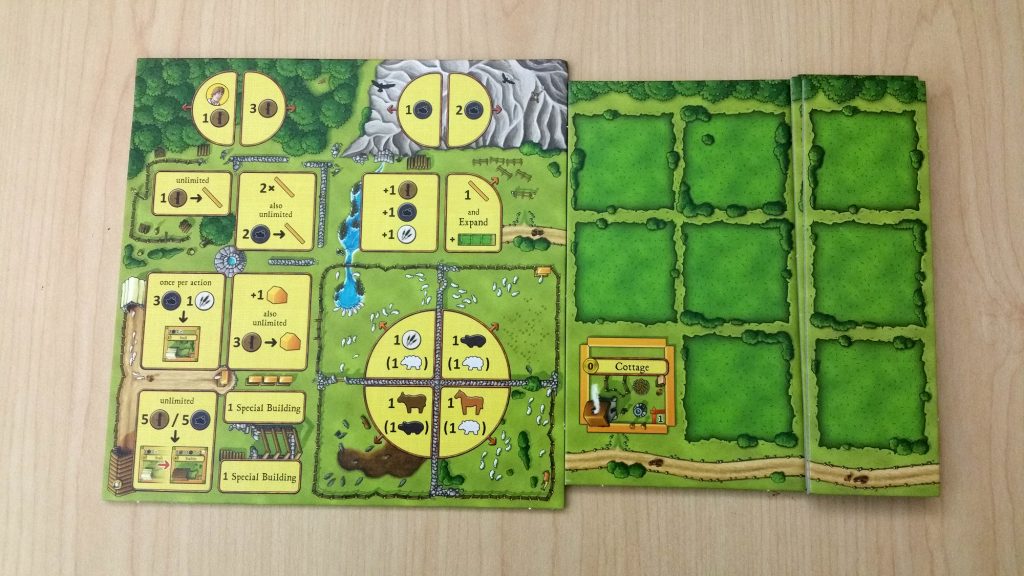
The primary game board is divided into several sections and each of these sections represents an action that can be performed. There is also a little bit of empty space next to the various actions to accommodate the storage of the various resource bits.
The tiles all have a similar setup to one another. Each tile has a cost in resources printed at the top of the tile. Beneath this is a header that contains a name as well as a coin icon with a number value in it if this tile is worth any victory points at the end of the game. Beneath this is another text area that describes what the tile does. If the tile is able to accommodate livestock, there will also be a small number in a red square in the lower right-hand corner that shows how many animals can be stored on the tile at any given time. Along the borders of each of these tiles are four pre-printed fences and this signifies that each tile is its own separate field.
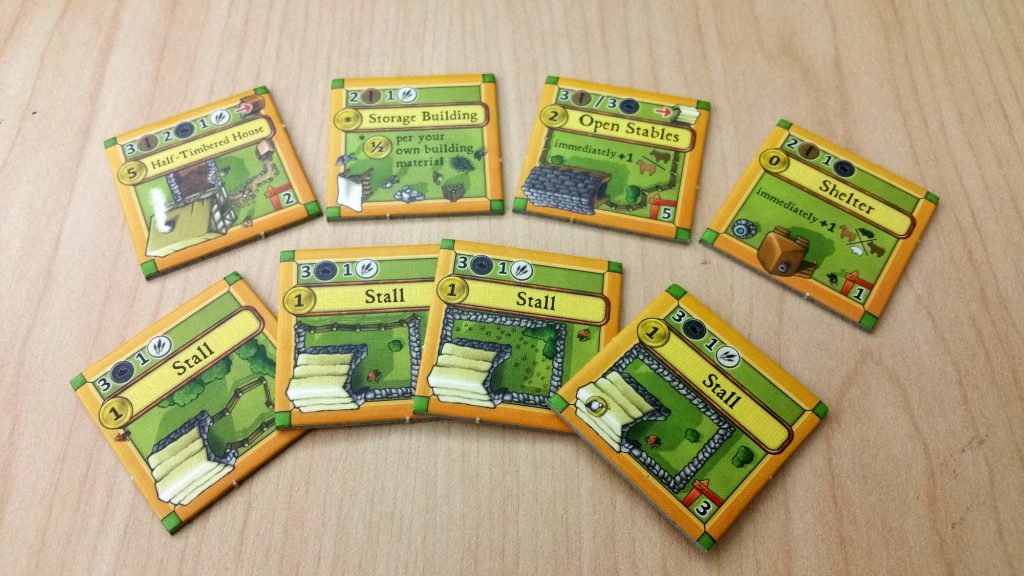
The quality of these various components is top notch. The cardboard is thick and sturdy. The wooden pieces look cute and have a nice tactile quality about them. The rulebook is well put together and provides plenty of detail and examples to help the players learn the game. Klemens Franz, the artist for Agricola and many other games, returns here as the artist and the illustrations are simply divine. Just like in Agricola, his idyllic illustrations really help bring the theme to life. There’s even a handy little scoring guide printed on the edges of the box.
The Actions
During the course of a turn, beginning with the starting player, the players will take turns selecting from the actions which are available on the game board. Just like Agricola, the player selecting the action places one of their family member tokens on top of it and this action becomes unavailable to the other player until the next turn.
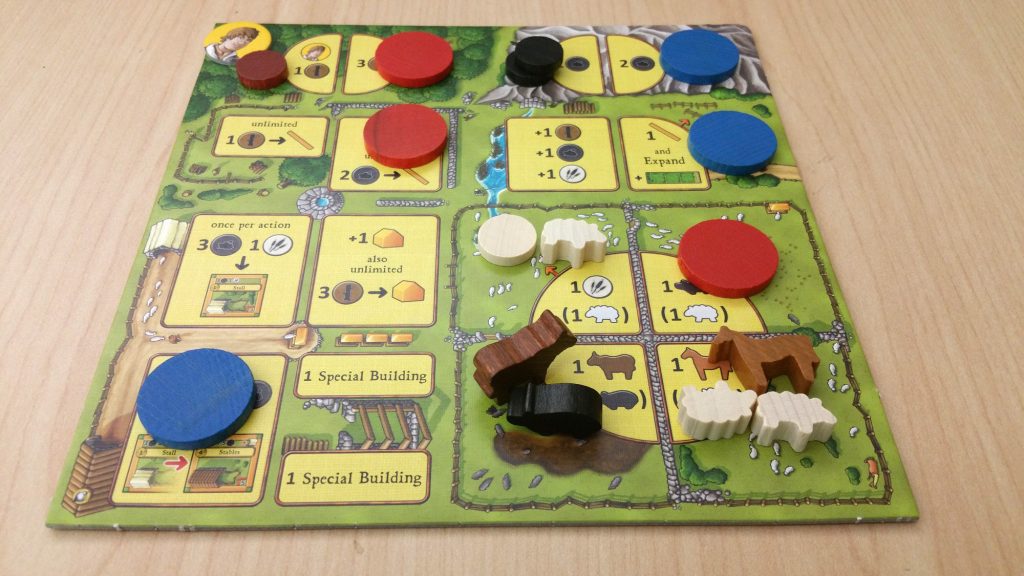
There are actions which provide you resources and actions which allow you to construct things. Some actions are static and then there are some that are replenished each round. The actions which are replenished continue to accrue resources even if there are resources left there from previous rounds. This means that the longer they go unselected the more resources there will be when they finally are.
End Game and Winning
At the beginning of each round, an additional fence is added to the “expand your farm” action from the game supply. When the last fence is added to this action, it signifies the final round of the game. Once all of the players have taken their turns for this round, final scoring begins. Players earn points for:
– the total number of each type of animal
– bonuses or penalties for having certain amounts of certain animals
– points for buildings
– bonus points from some of the effects of some of the buildings
– bonus points for using all of the spaces on your farm expansions
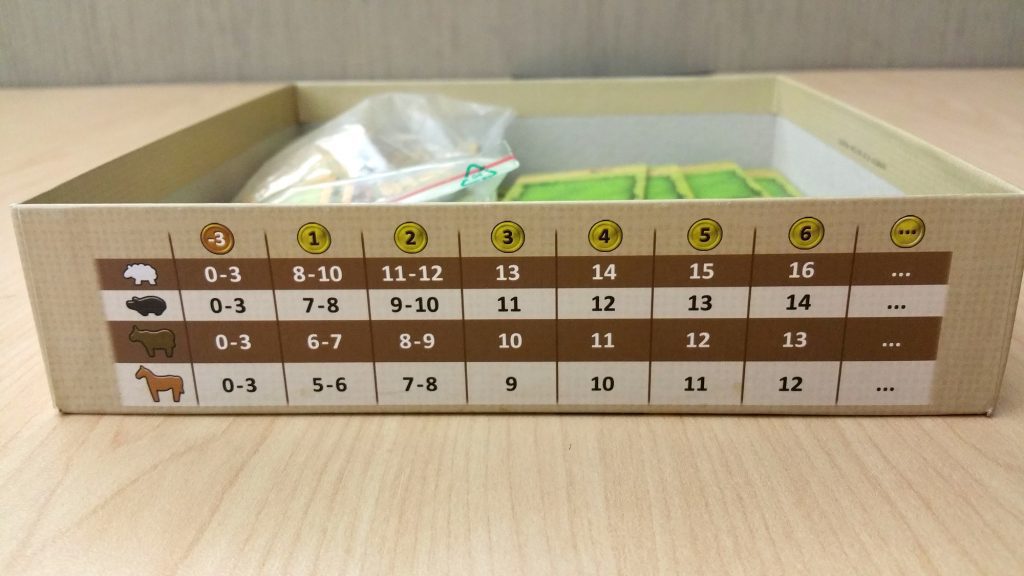
Whoever has the highest total at the end wins!
Thoughts
Have you ever experienced something that was so enjoyable that you wished you could distill it down into its smallest essence and carry it around with you? They’ve done it with jelly beans. They’ve done it with scented candles. They’ve done it with photography. And now they’ve done it with this game.
Agricola: All Creatures Big and Small takes everything that makes its titular inspiration great and compresses it down into a two-player tour de force. Seriously. I experience the same AP with this game that I experience with its parent game. There’s never enough time or resources available to do everything that you want to do and your opponent will inevitably take an action off of the board that would have benefited you greatly. All of these things combine together to create a fun, engaging, and extremely challenging experience. And, to top it all off, this game takes up a relatively small spatial footprint which makes it nicely portable and playable just about anywhere. I honestly cannot think of anything negative to say about this game. If you’re looking for a great two player game, then this one certainly fits the bill. I’m certainly not the only one that feels that way either. Check out Andy Matthews’ Top Six Two Player Games article to see why he gave it an honorable mention.
Agricola: All Creatures Big and Small is definitely a game that belongs on your shelf!


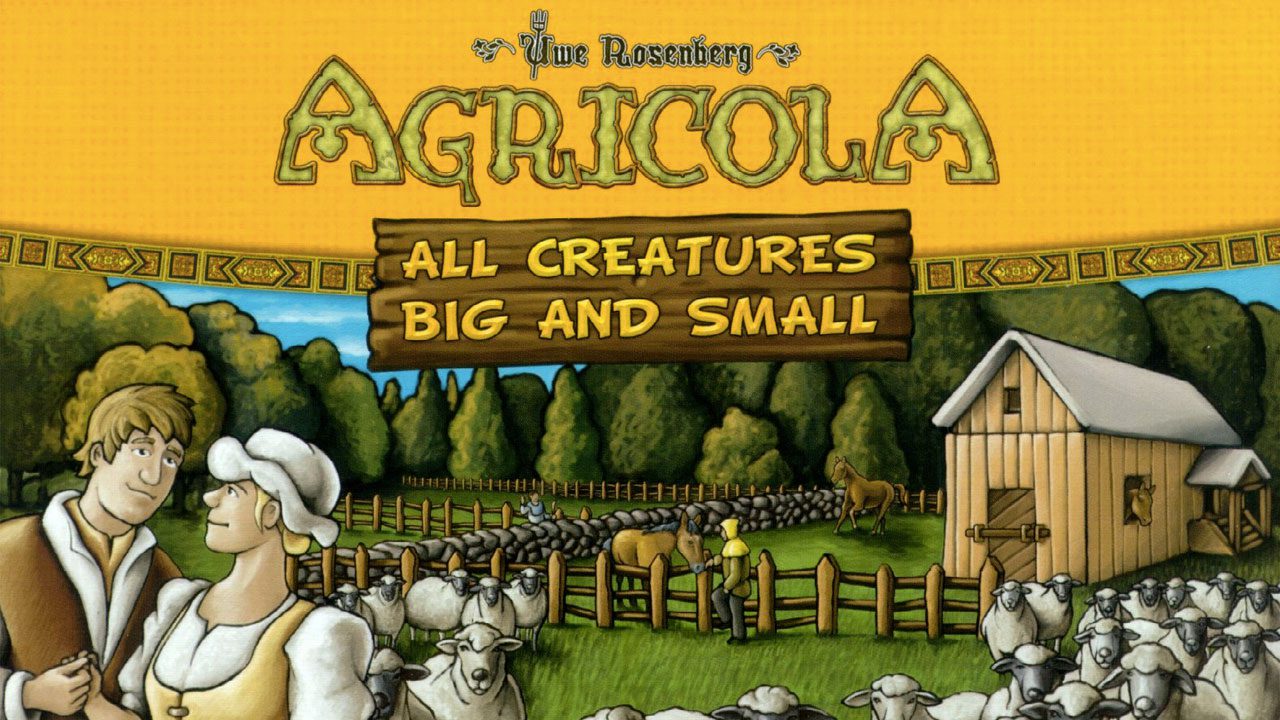



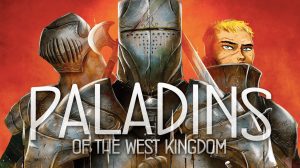





Add Comment